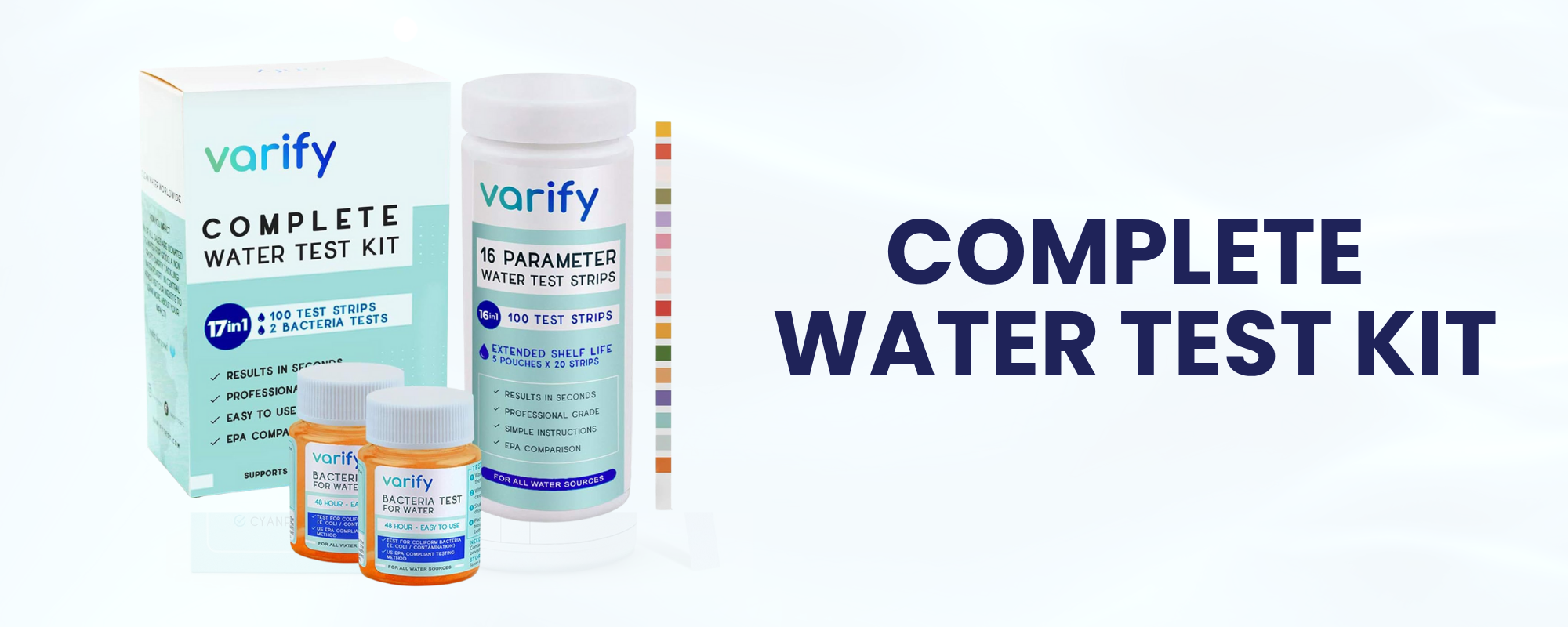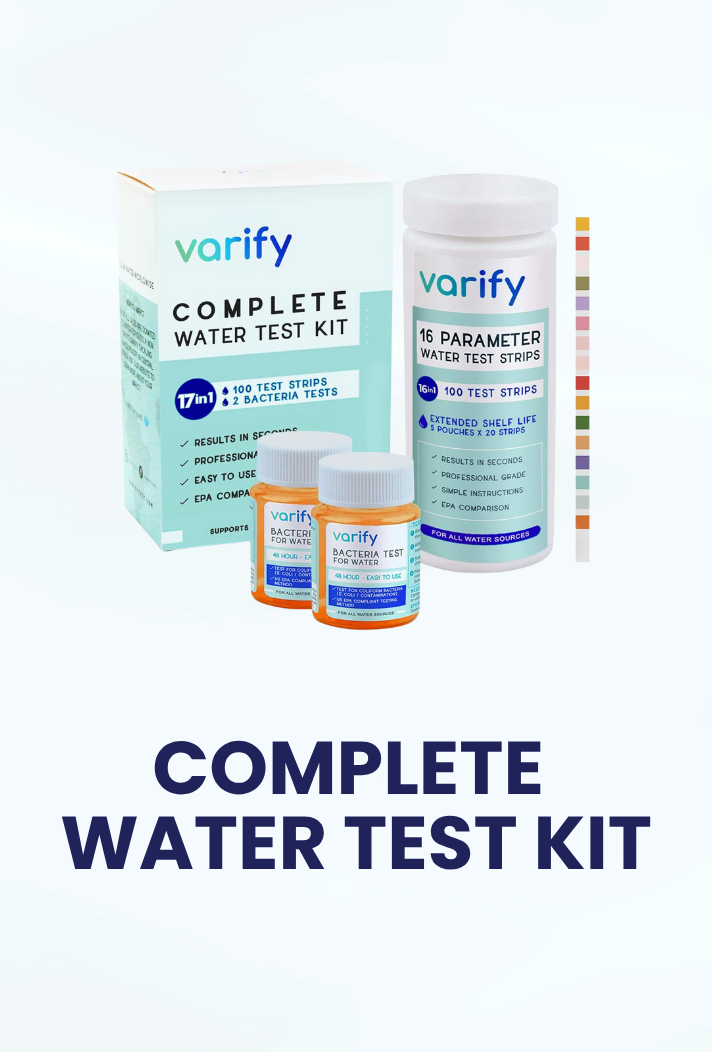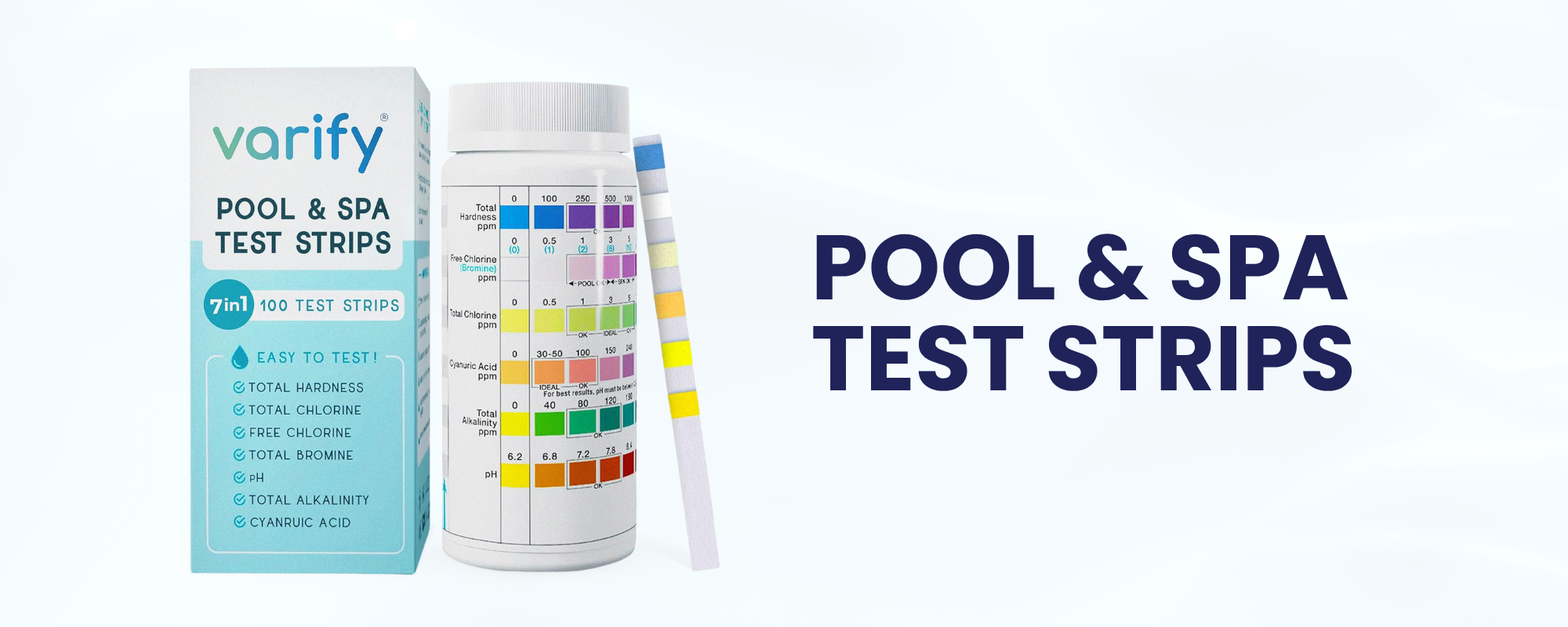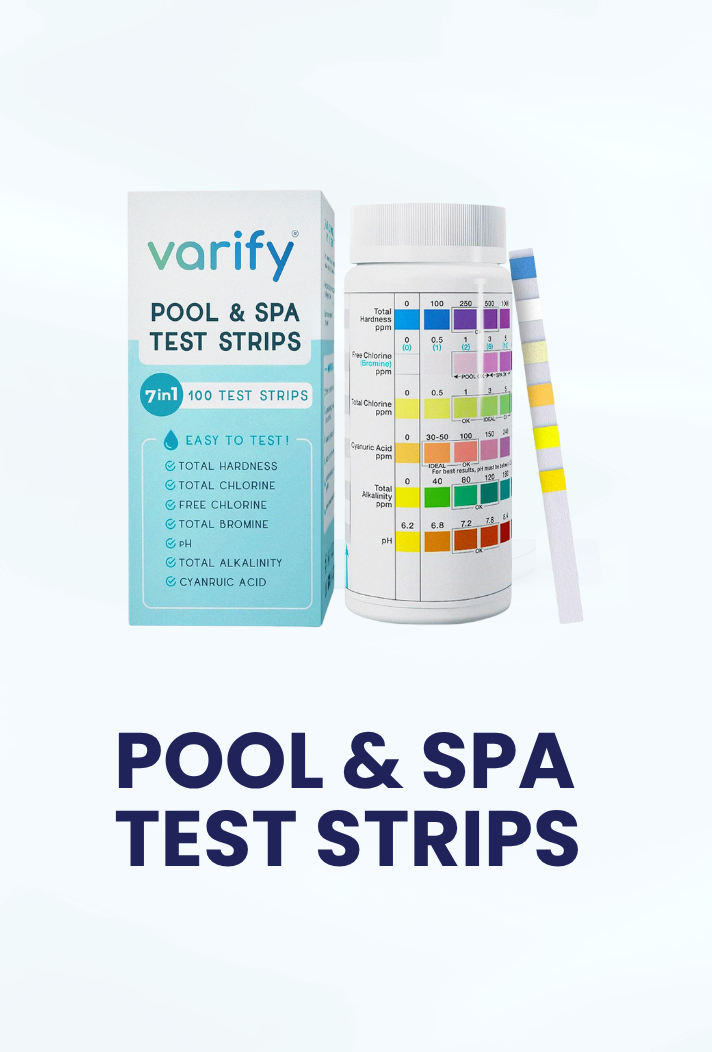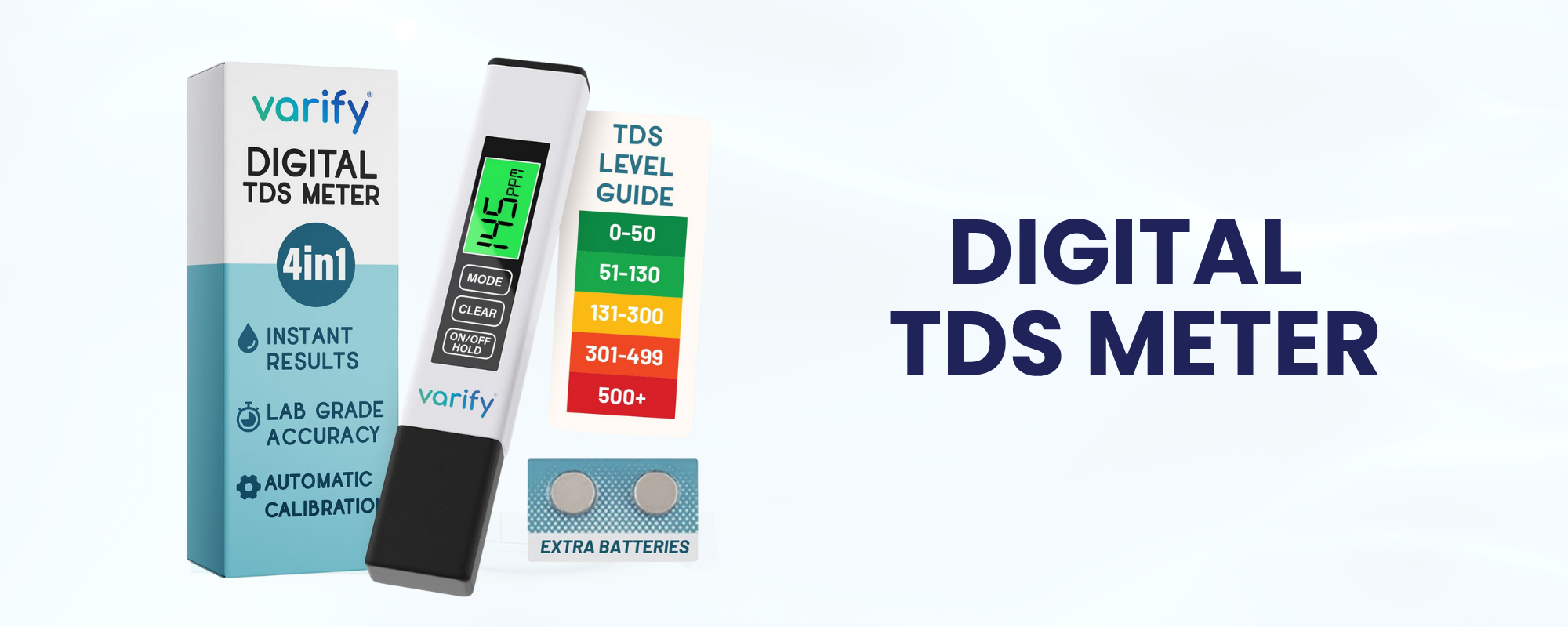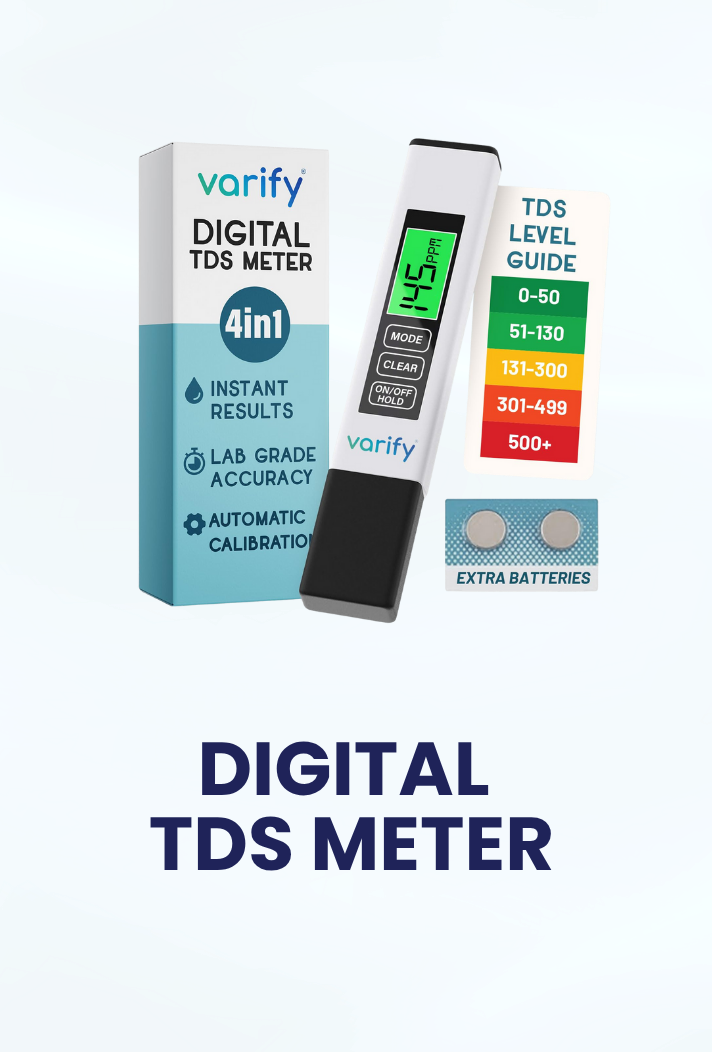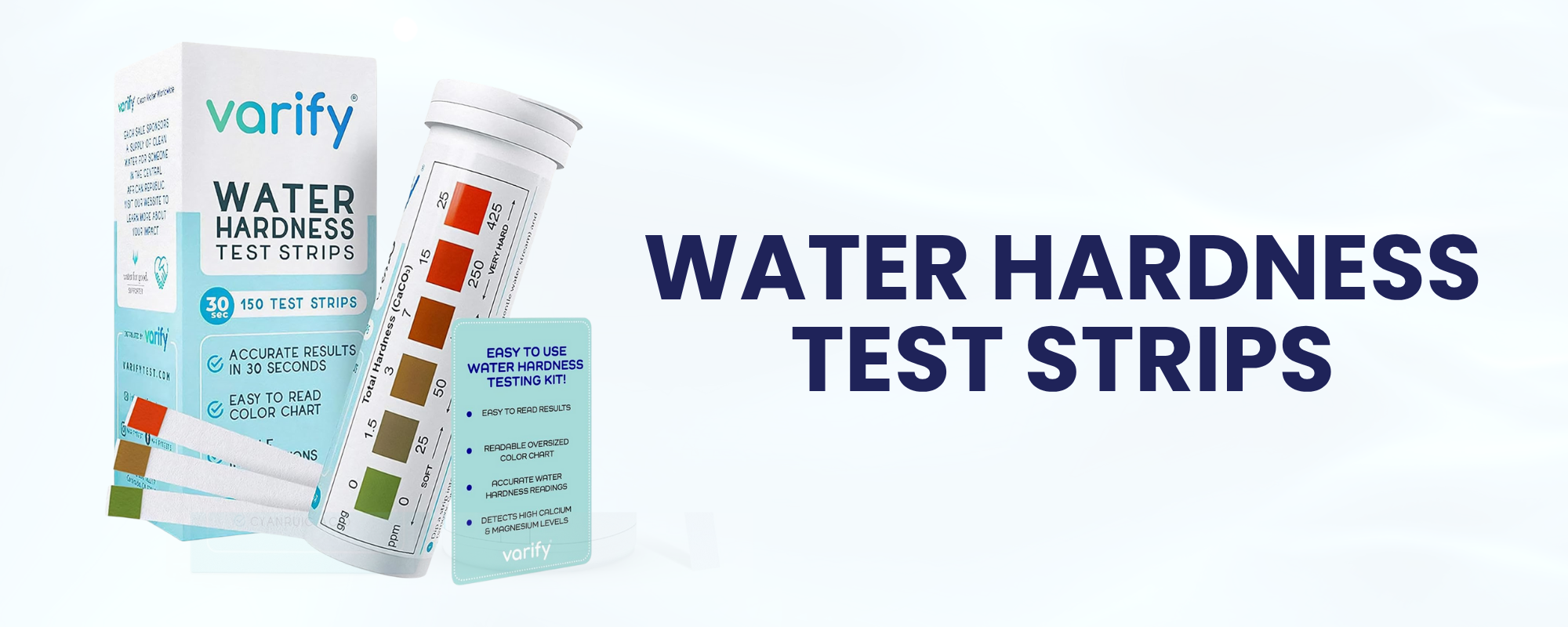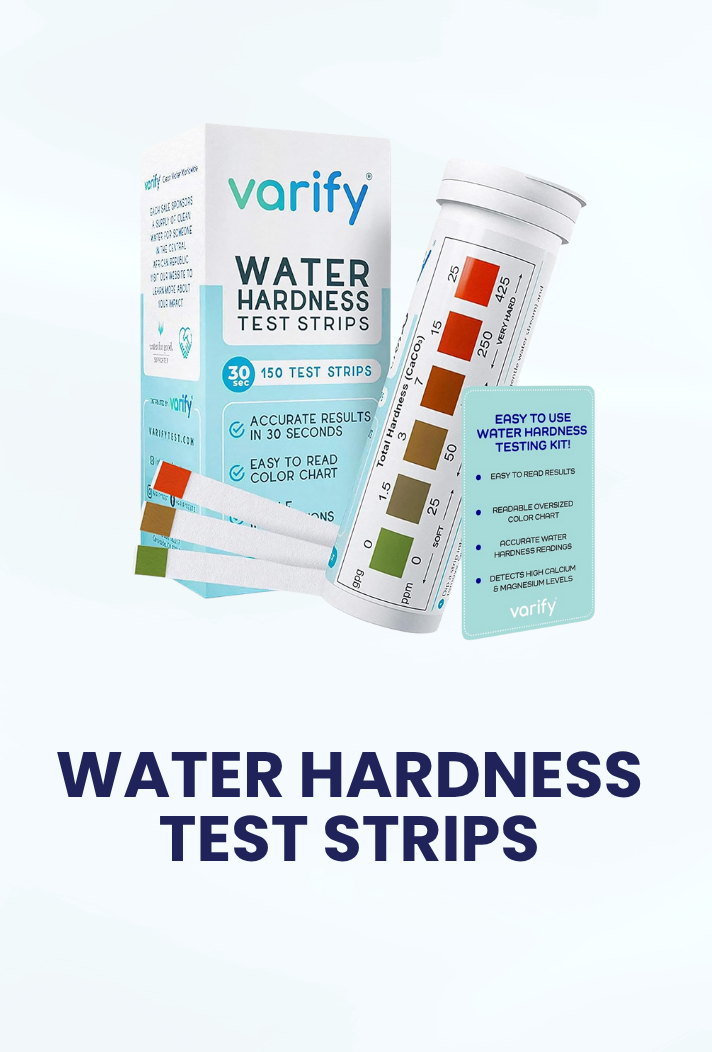General FAQs
Q. How long do the test strips last?How many tests can I do with this kit?
Q. How long do the test strips last?How many tests can I do with this kit?
Test strips are best used within 6 months after opening and up to 2 years if sealed.
Q. My results don’t match the chart exactly — what should I do?
Q. My results don’t match the chart exactly — what should I do?
Use your best judgment to select the closest color match, or estimate a value between two colors.
Q. How should I store my test kits?
Q. How should I store my test kits?
Keep them in a cool, dry place away from direct sunlight.
Q. Are these tests reusable?
Q. Are these tests reusable?
No — for accurate results, use a fresh strip for each test.
Q. Can I use the pool & spa strips for drinking water?
Q. Can I use the pool & spa strips for drinking water?
No — these are calibrated for pool and spa chemistry.
FAQs
Q.How do I read the bacteria test result?
Q.How do I read the bacteria test result?
Yellow at 48 hours = Negative.
Green at or before 48 hours = Positive.
Any other color / green after 48 hours = ignore (not valid).
Q. My bacteria test turned green after 3 days — is that positive?
Q. My bacteria test turned green after 3 days — is that positive?
No. Only read for 48 hours. Anything after that is overgrowth and not valid.
Q. Why is the bacteria vial brown/orange instead of yellow?
Q. Why is the bacteria vial brown/orange instead of yellow?
Moisture exposure during transit can discolor the powder. As long as it is not green for 48 hours, it is still a negative result.
Q. Why do some pads on the strip look pre-colored or tan before testing?
Q. Why do some pads on the strip look pre-colored or tan before testing?
This means the strip absorbs moisture. It may be expired or humidity-damaged.
Q.How long are test strips good for once opened?
Q.How long are test strips good for once opened?
Up to 6 months after opening, if stored sealed and dry.
Q. Can I get the bacteria test bottles separately?
Q. Can I get the bacteria test bottles separately?
Not yet — currently sold only as part of the complete kit.
Resources
User Guide (PDF)
User Guide (PDF)
Learn exactly how to use your Varify Test Kit with easy step-by-step instructions.
EPA Standards Comparison Chart
EPA Standards Comparison Chart
Compare your water test results with official EPA safety standards for complete confidence.
Printable Color Chart
Printable Color Chart
Access the Printable Large Color Chart to easily compare your test strip results.
Test Record Sheet
Test Record Sheet
Keep track of your test readings and monitor water quality over time.
Safe Drinking Water Ebook
Safe Drinking Water Ebook
Discover expert tips and insights on maintaining healthy, safe, and great-tasting water at home.
FAQs
Q1: My readings don't match other pool kits — why?
Q1: My readings don't match other pool kits — why?
Possible cause: expired or moisture-damaged strips. Always seal tightly.
Q2: Can I use these in hot water?
Q2: Can I use these in hot water?
No — samples should be cooled to room temp for accurate reading.
Q3: Why is my hardness always low even after adding chemicals?
Q3: Why is my hardness always low even after adding chemicals?
Likely soft fill water source — spa needs additional calcium increase.
Q4: The strip color doesn't change — now what?
Q4: The strip color doesn't change — now what?
Check expiration date and moisture exposure. May require replacement.
Q5: Should I test from the jets or standing water?
Q5: Should I test from the jets or standing water?
Circulate the water first, then test near the center, not stagnant corners.
Q6: How often should I test spa water?
Q6: How often should I test spa water?
2–3 times per week for proper balance.
Resources
Pool & Spa Water Care Handbook
Pool & Spa Water Care Handbook
Get the complete Pool & Spa Water Care Handbook and keep your water perfectly balanced.
Printable Large Color Chart
Printable Large Color Chart
Access the Printable Large Color Chart to easily compare your test strip results.
FAQs
Q1: Does the meter automatically shut off?
Q1: Does the meter automatically shut off?
No — you must manually press the power button to turn it off.
Q2: What does the TDS number mean?
Q2: What does the TDS number mean?
0–50 ppm = excellent
50–150 ppm = good
150–300 ppm = fair
300+ ppm = hard / mineral-heavy
Q3: Can it test fluoride, chlorine, or bacteria?
Q3: Can it test fluoride, chlorine, or bacteria?
No. A TDS meter only measures total dissolved solids, not specific contaminants.
Q4: Do I need calibration?
Q4: Do I need calibration?
No — it is factory-calibrated. Just rinse after each use.
Q5.The temperature reads incorrectly — what should I do?
Q5.The temperature reads incorrectly — what should I do?
Remove and reinsert batteries to reset, then test again.
Q6. How many tests can I do?
Q6. How many tests can I do?
Hundreds — there is no fixed limit.
Resources
TDS Meter User Guide
TDS Meter User Guide
Learn how to properly use and calibrate your TDS Meter for accurate, reliable readings every time.
TDS Meter Reading Guide (PPM)
TDS Meter Reading Guide (PPM)
Understand what your TDS readings mean and how different PPM levels affect water quality.
FAQs
Q1.The strip stayed white — what does that mean?
Q1.The strip stayed white — what does that mean?
Very soft water (low hardness) or damaged/expired strip.
Q2.Why are there 2 refill pouches in the box?
Q2.Why are there 2 refill pouches in the box?
They are extra strips (not different tests), kept sealed for freshness.
Q3.How long should I dip the strip?
Q3.How long should I dip the strip?
1–2 seconds only, then read after 15–30 seconds.
Q4.Why doesn’t my color match the chart?
Q4.Why doesn’t my color match the chart?
Likely humidity exposure or expired product.
Q5.Do I need to shake off water before reading?
Q5.Do I need to shake off water before reading?
Yes — gently shake excess water before comparing color.
Q6.What is a normal hardness level?
Q6.What is a normal hardness level?
0–50 ppm = very soft
50–120 ppm = soft/moderate
120–250 ppm = hard
250+ ppm = very hard
Resources
Water Hardness Color Chart
Water Hardness Color Chart
Quickly compare your test strip colors to determine water hardness levels with accuracy.
Guide to Water Hardness
Guide to Water Hardness
Learn what causes hard water, how it affects your home, and the best ways to treat it.


